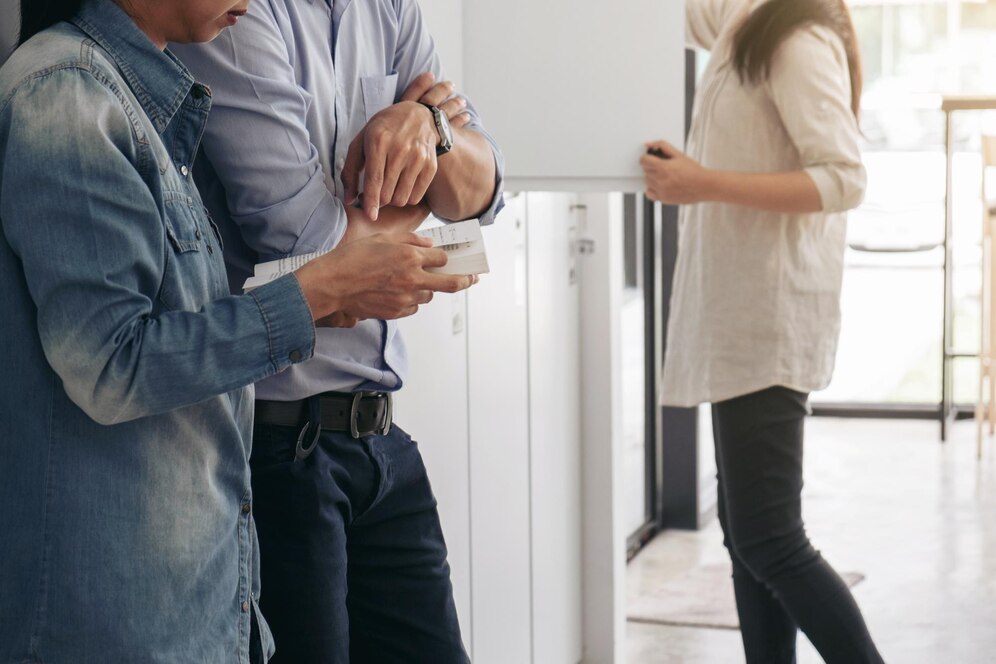Choose the right water heater with confidence. This guide covers sizing (FHR/GPM), technology options (tank, tankless, hybrid heat pump), efficiency (UEF), venting, installation best practices, total cost of ownership, and what to ask your contractor—tailored for homeowners across the Greater Toronto Area (GTA).

Quick Highlights
-
Right-size first: Match First-Hour Rating (FHR) for tanks or GPM @ temperature rise (ΔT) for tankless
-
Efficiency that matters: Look for high UEF ratings; condensing and heat pump models save the most energy
-
Safer installs: Correct venting, T&P valve, mixing/tempering valve, pan & drain, and expansion tank (where required)
-
Water quality counts: Hard water → scale → lower flow & efficiency; plan for descaling or softening
-
Pro commissioning: Leak, combustion/electrical, and condensate checks protect performance and warranty
-
Total cost of ownership: Compare purchase + install + energy + maintenance—not just the sticker price
Water Heater Types (At a Glance)
1) Traditional Tank (Gas or Electric)
-
How it works: Stores pre-heated water (30–80 gal).
-
Size by: FHR (gallons delivered in the busiest hour).
-
Pros: Lower upfront cost, simple maintenance, strong peak delivery.
-
Consider: Standby heat loss; footprint; recovery rate (GPH).
2) Tankless / On-Demand (Gas or Electric)
-
How it works: Heats water only when you turn on a tap.
-
Size by: GPM at ΔT (inlet temp → 120°F/49°C setpoint).
-
Pros: Endless hot water, high efficiency, wall-mounted, long life.
-
Consider: Gas line sizing/venting, annual descaling in hard water, condensate & neutralizer for condensing units.
3) Hybrid Heat Pump (Electric)
-
How it works: Moves heat from the air into the tank (like a refrigerator in reverse).
-
Size by: Tank capacity + UEF; ensure adequate room air volume.
-
Pros: Highest efficiency, cools/dehumidifies the space, incentives often available.
-
Consider: Clearance/air volume, condensate drain/pump, sound level.

Tanks → First-Hour Rating (FHR)
Add up morning/evening peak uses (showers, laundry, dishwasher). Example:
-
2 showers (20–30 gal each) + laundry (7–10 gal) ≈ 50–70 gal FHR target for many families.
Tip: FHR matters more than raw tank size—ask for the spec sheet.
Tankless → Gallons Per Minute (GPM) at ΔT
-
Add simultaneous fixture flows (e.g., shower 2.0 GPM + sink 1.0 GPM = 3.0 GPM).
-
Estimate ΔT (difference between incoming water and 120°F/49°C setpoint).
-
Select a unit whose rated GPM at that ΔT meets your peak demand.
Tip: In winter, incoming water is colder; pick a model that still meets your GPM with a larger ΔT.
-
UEF (Uniform Energy Factor) replaces EF to better reflect real-world performance.
-
Condensing gas units recover more heat from exhaust; hybrid heat pumps deliver top efficiency (lowest operating cost).
-
Real results depend on set temperature, usage patterns, water quality, and installation quality.
-
Atmospheric / B-Vent (legacy gas), Power/Direct Vent, and Condensing (PVC) options—chosen by model and site conditions.
-
Combustion air provisions, clearances, and proper slope for condensate lines matter.
-
Safety hardware: T&P valve, drain pan & drain, expansion tank (closed systems), seismic strapping where applicable.
-
Scale from hard water reduces flow and heat transfer—plan annual descaling for tankless and periodic tank flushes.
-
Consider a whole-home softener or conditioner if hardness is high; replace anode rods as needed to reduce corrosion/odour.
-
Mixing/tempering valve: Improves safety and stretches usable hot water.
-
Recirculation pumps (timer/smart): Faster hot water at distant taps; choose demand-controlled to minimize energy use.
-
Leak detection & shutoff valves: Adds protection in finished spaces.
-
Smart controls: Vacation mode, usage tracking, and alerts.
-
Site review & permits; verify gas/electrical, vent path, drainage, and clearances.
-
Code-compliant connections (gas/electric), venting, and condensate with neutralizer if condensing.
-
Safety setup: T&P valve to drain, mixing valve, pan & drain, expansion tank (as required).
-
Commissioning: Leak test, combustion/electrical checks, temperature calibration, FHR or GPM verification.
-
Owner walkthrough: Maintenance schedule, filter/strainer locations, descaling/flush ports, app setup (if applicable).
-
Registration & paperwork: Warranties, inspection sign-offs, and rebate submissions.
-
Good: High-recovery gas or electric tank (40–60 gal), standard UEF, mixing valve
-
Best for: Budget installs, reliable peak delivery
-
-
Better: Condensing tankless with service valves + recirculation option
-
Best for: Endless hot water, space savings, lower energy use
-
-
Best: Hybrid heat pump water heater (high UEF) with leak shutoff & smart controls
-
Best for: Lowest operating cost, dehumidifies utility space, incentives
-
(Model availability varies; we present multiple options at your quote.)
-
Weigh purchase + installation + energy + maintenance over 10–15 years.
-
Tankless and hybrid heat pump models often pay back via lower energy use—especially with rebates and proper maintenance.
-
Age: Tanks ~8–12 years; tankless/hybrid can last longer with maintenance.
-
Corrosion or leak at the tank body → replacement.
-
Major component failures (heat exchanger, control boards) vs. unit age/efficiency.
We’ll provide a repair-vs-replace comparison including incentives and projected running costs.
-
Tank flush: Annually to reduce sediment and noise.
-
Anode rod check: Every 2–3 years (tanks).
-
Tankless descaling: Annually in hard-water areas; clean inlet screens/filters.
-
T&P valve test and expansion tank pressure check.
-
Keep setpoint near 120°F / 49°C for safety and efficiency.
Add our Water Heater Protection Plan for annual tank flushes, priority service, repair discounts, and safety checks—including T&P valve testing and anode-rod inspection.
-
Will you size by FHR (tank) or GPM @ ΔT (tankless) for my peak demand?
-
Do I need gas line/electrical upgrades or a new vent path?
-
What UEF and warranty terms do these models carry?
-
How will you handle condensate (drain/neutralizer) and expansion tank needs?
-
Do you include mixing valve, pan & drain, and permit in the quote?
-
What maintenance is required and what’s covered under warranty?
Proudly serving the Greater Toronto Area (GTA) and surrounding communities. Contact us to confirm availability in your neighborhood.
- Get a Water Heater
- Water Heater Repair
- Water Heater Rebates & Incentives
- Water Heater Buyer’s Guide
What size tank do I need?
Match FHR to your busiest hour. Many families land around 50–70 gal FHR, but your household pattern determines the target.
How do I size a tankless unit?
Add up simultaneous GPM and select a model that delivers that flow at your winter ΔT to 120°F/49°C.
Tank vs. tankless—what’s better?
Tanks cost less upfront and deliver strong peak capacity; tankless saves space and energy with endless hot water (requires descaling and proper gas/venting).
Are heat pump water heaters loud or cold the room?
They’re typically quiet appliance-level sounds and can cool/dehumidify the space—great for basements/utility rooms.
Do I need a mixing valve?
We recommend it for safety and to stretch usable hot water, especially with higher setpoints.
What about hard water?
Plan for descaling (tankless) and annual flushes (tanks). Consider a softener if hardness is high to protect efficiency.
Keep it running like new
Add our Water Heater Protection Plan for annual tank flushes, priority service, repair discounts, and safety checks—including T&P valve testing and anode-rod inspection. Preventive maintenance extends tank life, reduces energy use, and keeps your hot water reliable.
Ready for quieter, more efficient heat? Book your free in-home quote today.
- Phone: (905) 895-7787
- Email Us: Send Email
- Service Area: Greater Toronto Area
At Coffee Heating and Air Conditioning, we proudly offer a full spectrum of residential and commercial HVAC services across Toronto and the Greater Toronto Area. From expert installation of high-efficiency furnaces, air conditioners, boilers, and water heaters to precision repairs, emergency service calls, and routine system maintenance, our certified technicians ensure year-round comfort and safety for every client. We also specialize in air quality improvements, duct cleaning, smart thermostat integration, and energy-saving upgrades tailored to your home or business. Whether you’re building new, upgrading, or need fast repairs, our team delivers responsive, reliable solutions backed by industry expertise and a commitment to excellence.
